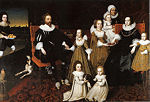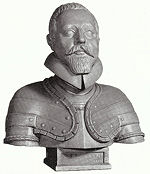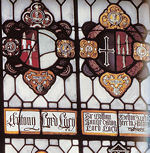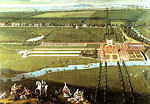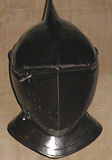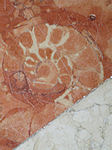Tour
of the Property
Pietra dura table 
Cornelius Johnson portrait
Busts of the Thomas Lucys On the mantlepiece can be seen the busts of Sir Thomas Lucy I and Sir Thomas Lucy II. In the centre is a bust of Queen Elizabeth I to mark the fact that she visited Charlecote to meet Sir Thomas Lucy I. These are the only depictions we have of the first two Thomases. On a table on the right is a bust of Sir Thomas Lucy III who can also be seen in the Cornelius Johnson portrait and in other portaraits around the house.
Stained Glass windows As you face the Great Hall windows the first few panes of stained glass on the left are Tudor and show the Lucy coat of arms bearing three pike standing on their tails. As you move into the bay window the pike are joined by crossed crosses. These symbolise the fact that Geoffrey Lucy - Bishop of Winchester (1195-1206) gave financial support to the 4th and 5th crusades. The remaining windows were created in the Victorian era.
Painting of the Dutch-style Water garden
Funerary helmets
High up on the window-side of the Great Hall are funerary helmets of the Sir Thomas Lucys. These were not worn in battle but were ceremonial being placed on the coffin when carried to the church on a bier. They would have had a feather plume and can be quite ornamented
Lucy crest doorstops The Lucy crest sits above the shield of pike and crosses. It consists of a boar's head seated in a winged crown. It can be found depicted on banners and firescreens in the house but in the Great Hall has been turned into doorstops.
Scattered over the marble floor of the Great Hall can be found fossil ammonites. They are in the brown and the white tiles but are more difficult to find in the white ones. |


